How To Get Rid Of No See Um Bites
Today we're going to be discussing one of the smallest and most annoying pests on the planet, No-See-Ums. These little pests may be hard to see, but their bite is certainly not hard to feel. Visiting Florida, I've had many encounters with these little bloodsuckers, and luckily for you, I've tested many products to find which ones work the best to kill and repel them.
You might also hear No-See-Ums referred to as biting midges, punkies, biting gnats, moose flies, and sand flies. These are all monikers for a family of biting flies known as Ceratopogonidae.
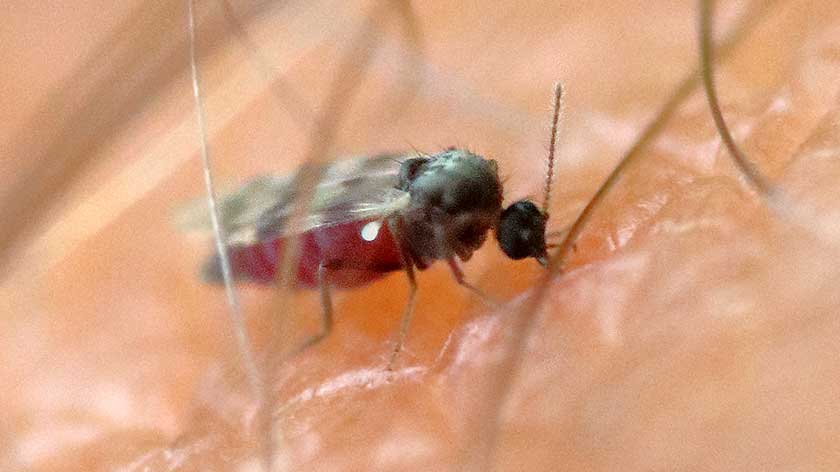
If you've ever been bitten by a No-See-Um, you already know what a pest these nearly invisible pests can be. In this guide, I'll share with you how to get rid of No-See-Ums, facts about their bites, pictures of No-See-Um bites, and some good repellents you can use to defend yourself while you're out and about.
No-See-Ums are incredibly small, making them hard to detect. There's no use trying to flee from them, as they are typically present in large numbers, particularly when the sun is rising or setting! When you first encounter No-See-Ums, you may think they are not big deal because their bites don't hurt too bad right away, but the next day you'll like find dozens of itchy lumps.
If you've had that experience, stick around and I'll share with you the best ways to keep No-See-Ums away.
Quick Navigation: What's in This Guide?
- No-See-Um Facts: Know Your Enemy
- What Attracts No-See-Ums?
- Why Do No-See-Ums Bite Some People More Than Others?
- Here Are the Best Ways to Get Rid of No-See-Ums
- 1. Sawyer 20% Picaridin Insect Repellent Lotion or Spray
- 2. Avon Bug Guard Towelettes with Picaridin
- 3. Avon Repellent Spray
- 4. No Natz No-See-Um Bug Spray
- 5. Essential Oils (Moderately Effective)
- 6. Demon Max Insecticide with 25.3% Cypermethrin
- 7. Dynatrap DT: No-See-Um and Mosquito Trap
- 8. Learn to Love Body Nets
- 9. Cover Your Legs
- 10. DEET Repellents (Not Recommended)
- No-See-Um Bite Relief – How to Treat Bites
- Locate the Bites
- Wash the Affected Areas
- Avoid the Urge to Scratch at the Bites
- Get Relief From the Itching Sensations
No-See-Um Facts: Know Your Enemy
They may be small, but biting midges are formidable foes. These creatures have a four-stage life cycle, which is similar to another well-known bloodsucker: mosquitoes. When a mature female biting midge is ready to reproduce, she will have a blood meal to nourish the eggs. She will then seek out a body water, muddy puddle, or even moist sand to offload her eggs. Biting midges can lay upwards of 400 eggs at a time and repeat this process about six or seven times during the female's lifetime.
The eggs of the biting midge usually start off cream in color, but later taken on a darker shade. In a short time, the larvae will emerge from their eggs. These larvae share the same segmented body shape as tiny mealworms, but the head is reddish brown in color while the rest of the body is off-white.
What Attracts No-See-Ums?
If you're the person in your group who always gets eaten alive by mosquitoes and No-See-Ums, it's not just bad luck. The reason lies in your genes! Scientists now estimate that 85 percent of our susceptibility to mosquito bites lies in our genetics.
Carbon Dioxide – Mosquitoes and No-See-Ums are attracted to carbon dioxide, a gas that humans naturally exhale. They also sense other chemicals humans exhale such as lactic acid, uric acid, and fatty acids. This chemical cocktail signals to no-see-ums that a vertebrae mammal is nearby.
The combination and amount of chemicals along with CO2 we exhale is influenced by our genetics.
Secretions and Lactic Acid Levels – Humans secrete compounds called saccharides and antigens through their skin that attract mosquitoes and no-see-ums. The amount a particular person secretes is largely influenced by their genetics.
Blood Type – Scientists have done extensive testing on which blood types attract mosquitoes, and they found that type O blood was the most attractive and type A was the least attractive.
The bottom line: There really is nothing you can do to make yourself less appealing to No-See-Ums without the use of repellents. You can also use mosquito nets and long sleeve clothing to prevent bites.
Why Do No-See-Ums Bite Some People More Than Others?
As mentioned above, there are a number of factors that make mosquitoes and No-See-Ums more attracted to some people. Factors such as blood type, skin secretions, lactic acid levels, and other biological factors make some people much more attractive to no-see-ums.
This is also why some no-see-um repellents will work for some people and not others!
These critters are everywhere — literally! But, don't go trying to hide from midges, No-See-Ums, or whatever you want to call them, these pests are everywhere. Mountain climbers have even encountered biting midges on Mount Everest — even Mr. "Green Boots" couldn't escape from biting midges.
Biting midges are incredibly small. These pests are so small that a biting midge could easily rest inside the letter "O" on an American dime. They are so small they can get through screens on windows and doors. When someone is bitten by a biting midge they are often aware that something is biting them, but they are unable to see exactly what is doing the biting. This is how this species earned the nickname "no-see-ums."
Here Are the Best Ways to Get Rid of No-See-Ums
First, we need to temper your expectations. Removing biting midges from your property can be a challenge. Traditional pest control techniques such as insecticides generally only kill off the present and active No-See-Ums and other flying pests for only 24 hours. But, if you are only looking to thwart biting midges for a one-day outdoor event such as a family reunion, insecticides can be effective in fulfilling your goals.
1. Sawyer 20% Picaridin Insect Repellent Lotion or Spray
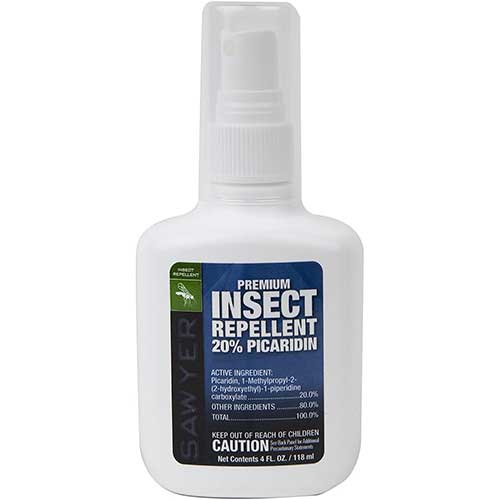
Buy from Amazon
This is one of the most popular DEET free mosquito and no-see-um repellents on the market. You can find it in both a lotion or spray bottle. Both the liquid and spray are very effective, but If I had to choose one I would go with the lotion repellent form here. The spray form is effective as well, but you'll have to apply it more often.
The active ingredient used to protect against mosquitoes and other biting insects is Picaridin.
If you haven't heard of Picaridin is a chemical that resembles the compound piperine that occurs naturally in black pepper. It does not kill no-see-ums of mosquitos, it simply repels them and seems to block their ability to sense prey. Sawyer also makes an odorless insect repellant to use on clothing, camping gear, and tents.
2. Avon Bug Guard Towelettes with Picaridin
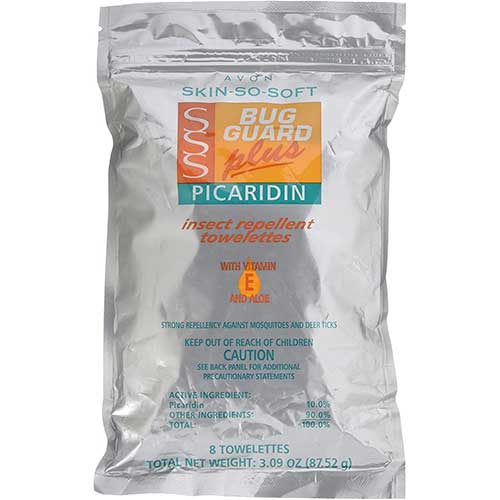
Buy from Amazon
Avon Bug Guard Towelettes also contain picaridin and are one of the easiest and most convenient ways to get rid of no-see-ums. They're great for traveling because unlike liquid sprays, aerosols, lotions, and gels that have bottle size restrictions when going through airport security, there are no restrictions on wipes like these.
They are great because you can just throw them in your backpack or car and whenever you notice no-see-ums or mosquitos you can bust them out.
From reading the package, we know it contains Picaridin, vitamin E, and Aloe. The only potential con I see to these wipes is that the inactive ingredients are not fully disclosed.
3. Avon Repellent Spray
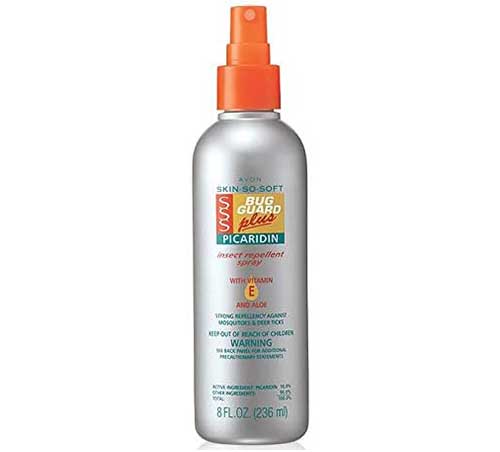
Buy from Amazon
No-See-Ums (biting midges) are most active during the dawn and dusk hours, especially in late springtime. They prefer these hours because the moisture in the air helps them better detect hosts and the conditions are neither too hot nor too cold. If you are active outdoors during these hours, one good spray is Avon Bug Guard Plus with Picaridin or Avon SPF 30 Bug Guard.
4. No Natz No-See-Um Bug Spray
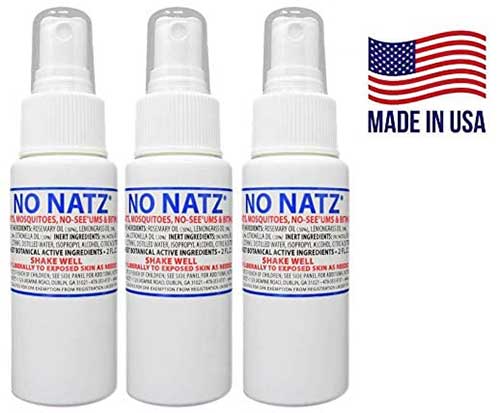
Buy from Amazon
No Natz is one of the most popular bug sprays to use against no-see-ums in Florida. This is a very important spray to use particularly around dusk. The spray is DEET-free and is hypoallergenic. It is made with natural ingredients such as lemongrass oil, rosemary oil, geranium oil, citronella oil, olive oil, and coconut oil. This spray comes in 2-ounce, 4-ounce, and 8-ounce containers.
The same company also makes a spray called No Mosquitoz. This is very similar to No Natz but uses cedarwood oil rather than germanium oil. Both with work decent to stop no-see-ums and mosquitos.
5. Essential Oils (Moderately Effective)
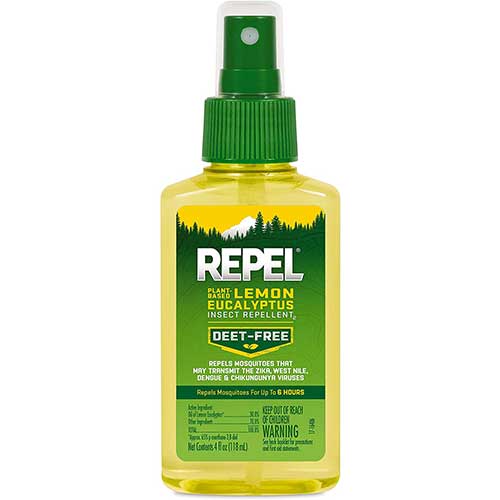
Buy from Amazon
If you share this article on Facebook, someone will eventually ask the question "What about essential oils?
Do any of them deter biting midges?" And, the answer is "Yes, sort of." The Center for Disease Control does list the oil of Lemon Eucalyptus (OLE) or PMD (chemical name: para-menthane-3,8-diol), the synthesized version of Oil of Lemon Eucalyptus as ingredients that "provide reasonably long-lasting protection". The article by the CDC referenced above is talking specifically about protection against mosquitoes, ticks, and other arthropods. It does not specifically mention biting midges or no-see-ums, but the page is still relevant to no-see-ums.
6. Demon Max Insecticide with 25.3% Cypermethrin
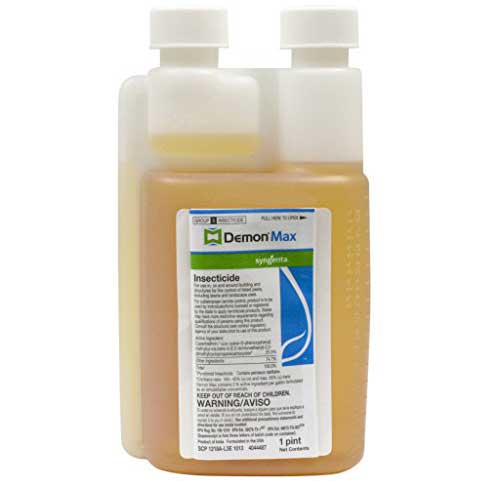
Buy from Amazon
While it isn't a long-term eradication solution, Demon Max Insecticide with 25.3% Cypermethrin appears to be highly effective against biting midges. Simply mix the concentrated solution in a two-gallon lawn sprayer like this one offered by Chapin International and spray the mix across your property. The cypermethrin in this product should deter biting midges for at least several days.
But, if you're looking to a long-term solution that only requires the flip of a switch, then we've got something for you. It's known as the Dyanatrap XL, but you can simply call it the ultimate biting midge killing machine.
7. Dynatrap DT: No-See-Um and Mosquito Trap
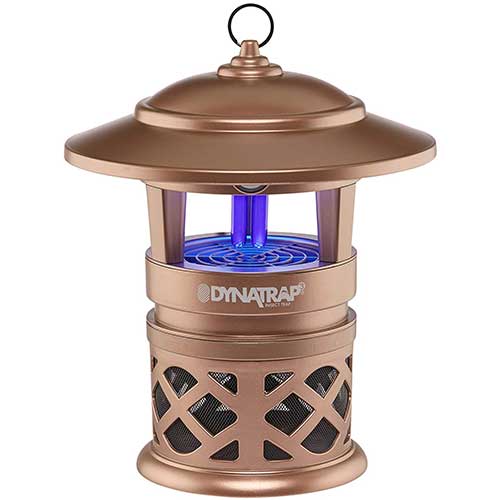
Buy from Amazon
The Dynatrap DT1100 offers the best protection against biting midges and other flying pests. And, it's backed by science. This is the half-acre version and there is also a one-acre version which is the DT2000XL Heavy Duty Insect Trap.
It's taken science hundreds of years to acknowledge what you probably discovered in just a few minutes of standing outside: biting midges appear to be attracted to mammals. More specifically, biting midges or No-See-Ums seek out sources of carbon dioxide (CO2), the gas all mammals exhale.
The Dynatrap XL features a surface that is coated in titanium dioxide. When placed in sunlight, this surface off-gases carbon dioxide, which attracts biting midges, mosquitoes, and other blood-sucking pests. Before the biting midges have time to scream "It's a trap!" the Dynatrap XL's whisper-quiet vacuum has already sucked them into the depths of the device's internal retaining cage. The internal fluorescent UV light helps to quickly dehydrate pests trapped in the cage as well as draw pests to their dehydrated doom.
With traditional bug zappers, there are always those annoying zapping sounds and curious kids trying to poke them with a stick. Plus, they are hardly effective against No-See-Ums. That is why we highly recommend the Dynatrap XL. Tolono makes a gnat and mosquito trap that can be used indoors.
8. Learn to Love Body Nets
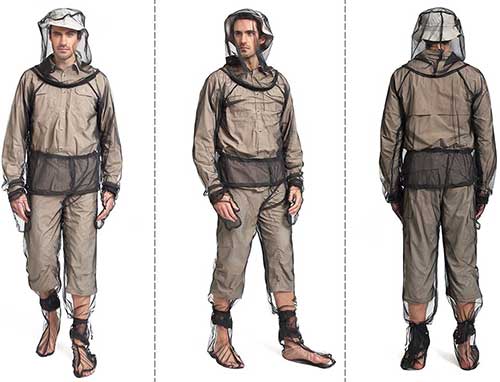
Buy from Amazon
If your outdoor adventures take you to an area where biting midges and mosquitoes are especially prominent, you want to look into ordering a full-body no-see-um and mosquito net. Whether you are planning to spend a great deal of time outdoors or traveling to Central or South America, we highly recommend at least having a full-body mosquito net on hand. Homeya makes an anti-mosquito and anti-biting midge full body net with a fine mesh, which greatly reduces the risk of being bitten by No-See-Ums. In my opinion, it's definitely not.
9. Cover Your Legs
Professor Paul Bartel is an invertebrate biology researcher at Warren Wilson College. Professor Bartel recommends keeping legs covered since this is the most popular location for biting midges to feed. The reason is simple. As you walk, the backside of your leg is shielded from airflow, which allows the biting midges to continue their feeding activity without being swept off the surface of the skin.
10. DEET Repellents (Not Recommended)
DEET remains a controversial insect repellent and should never be worn for prolonged periods due to the risks. But, products that contain DEET (N,N-diethyl-meta-toluamide) are some of the best at keeping biting midges from feasting on your chemical-laden skin. So, essentially, it's up to you to decide if adding poisons to your skin outweighs the risk of being attacked by a swarm of No-See-Ums.
No-See-Um Bite Relief – How to Treat Bites
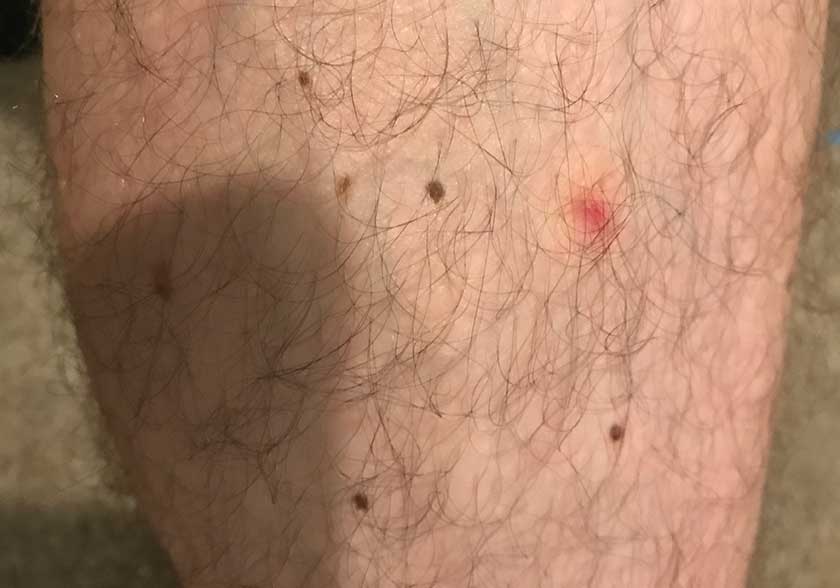
Biting midges are incredibly small. You may not even notice when one or many of these pests attach themselves to your skin and begin their feeding frenzy. Although, the bite marks they leave behind will quickly clue you in. Biting midges usually seek out exposed areas of skin, such as the legs, ankles, neck, face, arms, or hands.
Know the symptoms. Depending on how your skin reacts to the bites, you may see small red dots, or large clusters of lumps or welts if you have an allergic reaction to this type of insect bite. And, yes; the bites will most likely be itchy, but resist the urge to scratch them!
If home remedies and over-the-counter products do not relieve you of the symptoms, or you are having adverse reactions to the bites, causing problems with swallowing or breathing, go see a doctor as soon as possible. Also, if you develop a severe rash or experience other physical or health-related issues beyond the bite marks, put your safety first and seek help from a medical professional. Life-threatening reactions are rare, but that doesn't mean they don't happen.
Locate the Bites
If you see several bites on your arms or legs, check other areas of your body to see if those too were affected. Biting midges are highly opportunistic and will attack the surfaces that are the most exposed. But, if you happened to be wearing loose-fitting clothes that day, the biting midges could have gone after other areas of your body as well.
Wash the Affected Areas
Use warm water and mild antibacterial soap to wash any areas where you've been bitten by No-See-Ums. It's best to do this as soon as you notice bites. By washing, you eliminate any residual saliva from the No-See-Ums left on your skin, which can reduce irritation. In addition, this step helps to reduce the risk of infection.
Avoid the Urge to Scratch at the Bites
It can be hard to resist itching at the bites. But, itching can lead to an infection, which will prolong the agony. There is plenty of anecdotal evidence which states that scratching bite marks from biting midges doubles the healing period. So, try to avoid itching the bites at all cost!
Get Relief From the Itching Sensations
Because biting midge saliva contains histamines, you may feel compelled to scratch at the affected area. A loratadine-based antihistamine such as Kirkland AllerClear can help diminish the effects of the itchy sensations and bring much-needed relief.
Some recommend applying a towel soaked in hot water to the bites, while others find relief from applying a cold pack or cortisone to the bites. We've also heard that cortisone and zinc creams offer effective relief from bites. Cortisone, in particular, has proven to be effective in reducing the swelling of welts caused by biting midges.
Biting Midge Facts
Wherever there are mammals there will be biting midges. These pests are persistent and actually quite odd. We'll start with a highly theoretical question: If you could eliminate all biting midges on the planet with the flip of a switch, would you do so? Before you decide, read the following paragraph.
Eliminate chocolate or biting midges?
The choice is yours. Do you like chocolate? In classic fairytales, all grand wishes, whether dispensed by a genie or wizard, seem to come with a negative consequence after the wish is fulfilled. The biting midge is the Ying to chocolate's Yang. Biting midges are the only known pollinators of the cacao tree — yes, that very same tree that produces cacao nuts, which are eventually turned into the world's favorite delicacy, chocolate. So, would you choose to eliminate all biting midges and possibly create a future world with no chocolate? Or, are you willing to suffer from the occasional No-See-Um attack in order to enjoy chocolate for the rest of time?
Biting midge larvae slow their growth in colder climates
Your typical No-See-Um larva will pupate and reach adult after 28 days. But, the hardy variety of biting midges in colder climates (sorry Mt. Everest climbers) can remain in the larval stage for nearly a year. How is that for weirdness?
Scots versus biting midges: the saga takes an unlikely turn
The "highland midge" is a notorious pest in Scotland, which makes us wonder how kilts were ever a thing. In Scotland's northwest, highland midges gather in clouds, where they plot the carnage they are soon to extoll on unsuspecting sheep, deer, Scots, cattle, and then more sheep (Scotland has plenty of sheep).
While the highland variety is not known to carry diseases that can affect humans, biting midges have left many visitors to swear off traveling to Scotland ever again. In 2010 there was a ray of hope that a long cold snap would kill off the biting midges. We can imagine the biting midges guffawing at this suggestion. In the spring, ecologists found that not only did the lengthy cold not kill the pests, but their populations actually increased since their natural predators (birds, bats, and other predators) were more affected by the harsh cold.
Mass reproducers
The female biting midge can lay over 2,800 eggs within her lifetime. Now, compare that to the measly 300 eggs female mosquitos lay during their short lives!
The best chemical midge-killer is banned in the US
As a country, we had a choice in the 1950s: either we continue poisoning the planet by using DDT to kill biting midges and mosquitos, or we call a momentary truce to this mutually assured destruction scenario. As you'd expect, the United States banned the sale of DDT-based insecticides.
The Greeks referred to them as "horn beards"
When it came time to name the family of biting midges, the Greeks settled on Ceratopogonidae, which roughly translates to "horn beards."
Biting midges are neither terrestrial nor aquatic
Since biting midges need moist environments to grow in their larval form, they require a specially adapted oxygen-breathing organ while in water. This makes them truly unique in the insect world.
No-See-Ums are disease vectors in livestock
Biting midges are especially problematic in parts of Europe, where they spread nasty livestock disease such as "Bluetongue virus (BTV)."
Sometimes they lay eggs in rotten fruit
In tropical climates, it can sometimes be difficult for biting midges to find a suitable spot to lay their eggs. So, they choose the next best thing: rotten fruit.
FAQs on Biting Midges
You have questions, we have answers! In this section, Pest Control Gurus will attempt to answer your questions as accurately as possible. If you have a specific question on No-See-Ums that is not covered here, please reach out to us and we will answer it on this page.
Do No-See-Ums lay their eggs under people's skin?
It may be an old wives' tale told to young Scots to have them home before dusk, but biting midges do not lay their eggs under the skin of unsuspecting humans. It sounds totally plausible given the nature of biting midges, but fortunately, this myth is false.
Do biting midges spread disease?
There have been no reported cases of diseases spread by No-See-Ums in the United States. But, in South America, Central America, and in the Caribbean, biting midges are known vectors of Mansonella filarial worm parasites, which can cause skin lesions and dermatitis. Health experts state that the primary concern of No-See-Um bites in the United States is due to allergic reactions, which on rare occasions can be life-threatening.
Are chiggers and biting midges the same thing?
These two species are often mistaken to be one and the same. No. Chiggers are a type of earth-dwelling, biting mite while biting midges belong to the order of flying insects. Also, sand flies are not biting midges, these are a different pest species.
Can I alter my property to get rid of biting midges?
Yes! One long-standing practice has been to increase the drainage to properties to remove standing water and excess moisture in the area. Biting midges love humid coastal regions and are especially fond of tall grass, which helps retain moisture in the earth. So, if biting midges are problematic on your property, you might look into hiring a drainage specialist and mow your lawn frequently.
How bad are bites from biting midges?
While there are definitely worse insect bites out there, most bites from biting midges only cause scratching and irritation. Of course, there are always allergy risks and risks to animals and livestock.
How do I protect my pets while outdoors?
The best way to protect pets from biting midges while they are outdoors is to keep them inside during the dawn and dusk hours, the period when biting midges are most active. There are some spray-on products that are designed to deter biting midges, but many users report that the effectiveness of these products is questionable.
Where are biting midges common?
Biting midges are more common in moist, highlands type environments, but they can be found in every part of the world, from the Arctic to Antarctica. In the United States, biting midges are especially problematic in areas such as Sacramento and the west end of the Central Valley in California.
What time of year are biting midges most active?
In the United States, biting midges are most active during the warm and wet seasons. Therefore, around May and June are the most common times of year to be bitten by biting midges. This is due to the fact that the females are busy reproducing and require bloodmeals to nourish the eggs.
Why do only female No-See-Ums suck blood?
The reason that only the females suck blood is that they are seeking extra nourishment before they lay eggs, which they will do five to seven times in their lifetime. Male biting midges, on the other hand, are completely harmless to humans and livestock since they only feed on nectar and occasionally tree sap.
Why are No-See-Um bites itchy?
If you've ever been bitten by No-See-Ums then you know the worst part isn't the bite, it's all the itchiness that follows. The reason bites from No-See-Ums itch is because their saliva contains proteins and histamines that aid in anti-coagulation and keeps blood pooling at the surface of the skin. If you're looking for more info on this interesting topic, the US National Library of Medicine offers free access to a peer-reviewed journal article titled "The salivary secretome of No See Ums, Clucoides sonorensis."
Public Service Announcement. Give Us Your Feedback, Please!
After trying any of the methods on this list, please give us your feedback on how they worked for you. No-see-ums are literally one of the most difficult pests to deal with. While I have personally tried many of the products on this list, I have heard of products working for one person, but not another person who was standing right next to them. As mentioned above, our level of attractiveness to no-see-ums is largely genetically influenced.
Let me know if you have found any products that have worked for you in the past. A combination of essential oils would be great, but I have not found any combinations that are effective enough to recommend as of yet!
First image top of the page (biting midge) credit: CSIRO.

My name is Blane and I'm a life-long resident of Southeastern Louisiana. I've been working as Pest Control Technician and Inspector for about 1.5 years now.
I've worked in many other industries as well, including consulting, managing, as well as at the ground level in fields including Food Service, Corporate Automotive sales, and finance. Whether it be providing counsel, content, or hands-on support; my goal remains to add value to the lives of the people I serve.
If you have any questions regarding pest control, leave them below. I would be happy to help you out in any way I can.
How To Get Rid Of No See Um Bites
Source: https://www.pestcontrolgurus.com/no-see-ums/
Posted by: winterreast1976.blogspot.com

0 Response to "How To Get Rid Of No See Um Bites"
Post a Comment